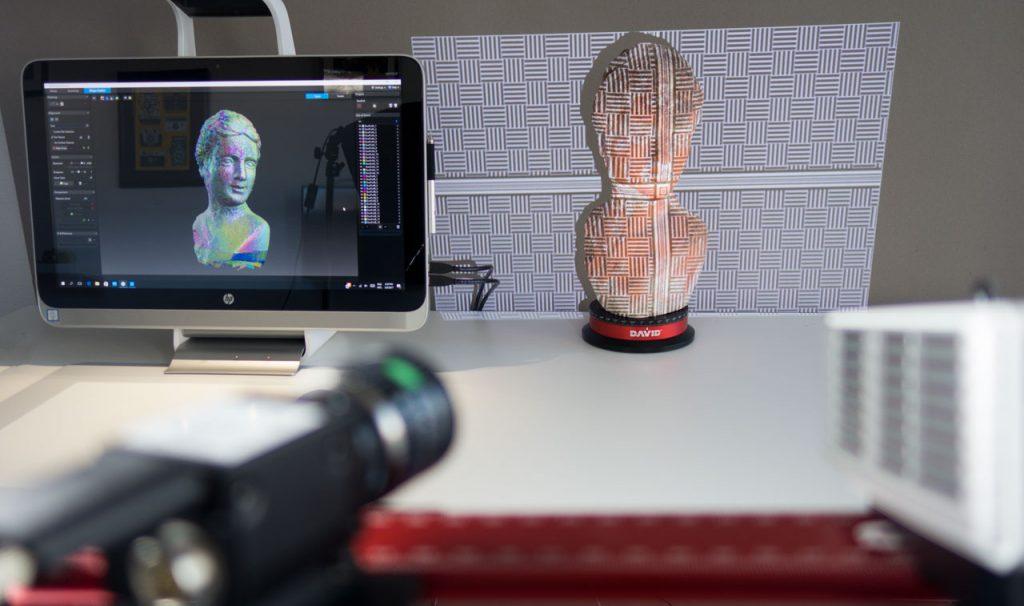The Emerging Technology of 3D Scanning

3D scanning has emerged as a revolutionary technology that allows for the digital capture and replication of physical objects in three dimensions. While the concept of 3D scanning has existed for many years, recent improvements in both hardware and software have made the technology more accessible and powerful than ever before. As 3D scanning becomes more mainstream, it is finding applications across many industries and transforming how we interact with the physical world.
What is 3D Scanning?
3D scanning is the process of capturing the shape and appearance of real-world objects and environments. 3D scanners use a variety of technologies such as laser scanning, photogrammetry or structured light scanning to digitally collect thousands or millions of data points on an object's surface. These individual points in three-dimensional space are then connected and manipulated to form a "point cloud" which can be further processed to generate textured 3D models and technical drawings.
There are two main types of 3D scanning technologies used today - contact scanners and non-contact scanners. Contact scanners require physical contact with the object and collect data by tracing over surfaces. Non-contact scanners rely on laser light, cameras or other devices to digitally sample surface geometry from a distance. Both approaches allow for precise replication of physical characteristics into digital 3D models.
Applications of 3D Scanning
Engineering and Manufacturing
3D scanning plays a crucial role in product design, rapid prototyping, quality control and reverse engineering applications. Complex parts can be digitally scanned to assist in repair, replacement or recreate aged components. Manufacturers use 3D scanning during production to ensure dimensional accuracy and conformance to engineering specifications.
Entertainment and Gaming Industries
Animators and game developers extensively employ 3D scanning to digitize real actors, objects and environments for integration into virtual worlds. Motion capture body scans allow realistic digital motion and animation. Full-body and facial scans enhance character development and visual experiences.
Healthcare
Orthopedic and dental industries rely on 3D scanning for medical applications such as pre-surgical planning, prosthetics design and documentation of anatomical features. Dental impressions and full dental arches can now be digitized for crowns, bridges and implants. 3D printing is enabled based on digital models generated through scanning.
Forensics and Archaeology
3D laser scanning provides a non-destructive means to digitally preserve crime scenes, archaeological sites or areas affected by natural disasters. Detailed digital records allow remote analysis and reconstruction of spatial contexts that would otherwise be impossible after physical evidence degrades over time.
Cultural Heritage
Precise 3D digital copies protect fragile artifacts and irreplaceable cultural monuments from degradation. Museums employ 3D scanning to document, study and share cultural heritage objects. Highly accurate replicas enable accessibility while preserving priceless originals. Digital archives also permit restoration based on pre-damage condition when monuments suffer damage from pollution, accidents or conflict.
Advancements in 3D Scanning Technology
Recent technology breakthroughs have expanded the capabilities and applications of 3D Scanning . Multi-sensor fusion combines data from different scanner types for enhanced dimensionality, resolution and capture speed. Whole-room and building-scale scanning enables large-scale documentation and modeling of interior and exterior spaces. Real-time 3D scanning devices provide fast, mobile scanning suitable for on-site applications.
Higher resolution scanners reveal finer surface details down to micron levels. Time-of-flight cameras make extremely rapid non-contact scans possible within seconds. Structured light scanning generates dense, watertight models suitable for 3D printing. Newest scanners employ blue laser technology for improved range, speed and safety. Simultaneous localization and mapping (SLAM) allows mobile devices to autonomously generate 3D maps of unknown environments during operation.
Advancing AI integration is automating once labor-intensive post-processing stages. Advanced SLAM, deep learning and photogrammetry-based solutions can now rapidly convert unstructured point clouds into coherent, textured 3D models with limited user input. While significant technical challenges remain, continued advancements are bringing the high performance of industrial-grade desktop 3D scanners within reach of mainstream users. The latest hardware developments and software tools are making 3D scanning more versatile, intelligent and accessible than ever before.
3D scanning technology has blossomed into a mature, multifaceted field with profound influences across industries and scientific disciplines. From its origins in manufacturing, it now permeates architecture, healthcare, cultural heritage, gaming/entertainment, forensics and many other sectors. As scanning hardware and software evolve to new levels of speed, precision and usability, its impact is sure to grow. Combined with 3D printing and computer-aided design tools, 3D scanning seamlessly bridges the physical and digital realms, allowing for unique applications in product development, prosthetics, virtual/augmented reality, preservation and more. Going forward, this merging of real and virtual worlds through 3D scanning will certainly continue transforming how we create, experience and interact with our three-dimensional surroundings in novel ways.
Get more insights on-3DScanning
- Art
- Causes
- Crafts
- Dance
- Drinks
- Film
- Fitness
- Food
- Juegos
- Gardening
- Health
- Home
- Literature
- Music
- Networking
- Other
- Party
- Religion
- Shopping
- Sports
- Theater
- Wellness
- IT, Cloud, Software and Technology


